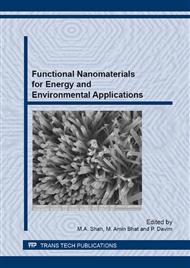p.23
p.33
p.39
p.43
p.53
p.61
p.69
p.73
p.79
Prevalence of Aero-Allergenic Micro Fungi in Extra & Intramural Environments of a Saw Mill in Pondicherry City, India
Abstract:
Prevalence of airborne fungal spores with their seasonal periodicity in the extra and intramural environments of a saw mill of Pondicherry region was carried out by gravitation method from January 2011 to December 2011. Composition and concentration of fungal spores considerably varied from indoors to outdoors as well as from season to season. Indoor air harbored maximum fungal spores (61%) in comparison to outdoor air (39%). Occurrence of fungal species was predominated with more number of propagules during mid winter (December) and early rainy (July) periods in comparison to other months. Quantitatively, Cladosporium was found with the highest frequency and had four members i.e., C. cladosporioides, C. herbarum, C. resinae, C. sphaerospermum but qualitatively, Penicilli and aspegilii were isolated highest in its contribution to total CFUs. Out of the 32 isolated fungal taxa, Aspergillus fumigatus, A. niger, Rhizopus stolonifer and Alternaria alternata were the predominant aeroallergens which cause different types of respiratory/lung diseases in atopic human beings were isolated. In seasonal periodicity, winter contributed the maximum spore load (41%) followed by rainy (33%), summer was found with the least (26%) in harboring the spore mass in the indoors and outdoors. Alternaria alternata, which is accounted as a human allergen for sporosis inducer and an agent for hay fever and other pathologies, was also intermittently recorded. A few plant pathogenic fungi like Helmithosporium sp. & Fusarium spp, saprophytic, field and storage fungi were also recorded during the study period. Effect of meteorological parameters on the fungal spores in the saw mill atmosphere was significantly assessed by Pearsons correlation coefficient analysis.
Info:
Periodical:
Pages:
53-60
Citation:
Online since:
July 2013
Authors:
Price:
Сopyright:
© 2013 Trans Tech Publications Ltd. All Rights Reserved
Share:
Citation:


